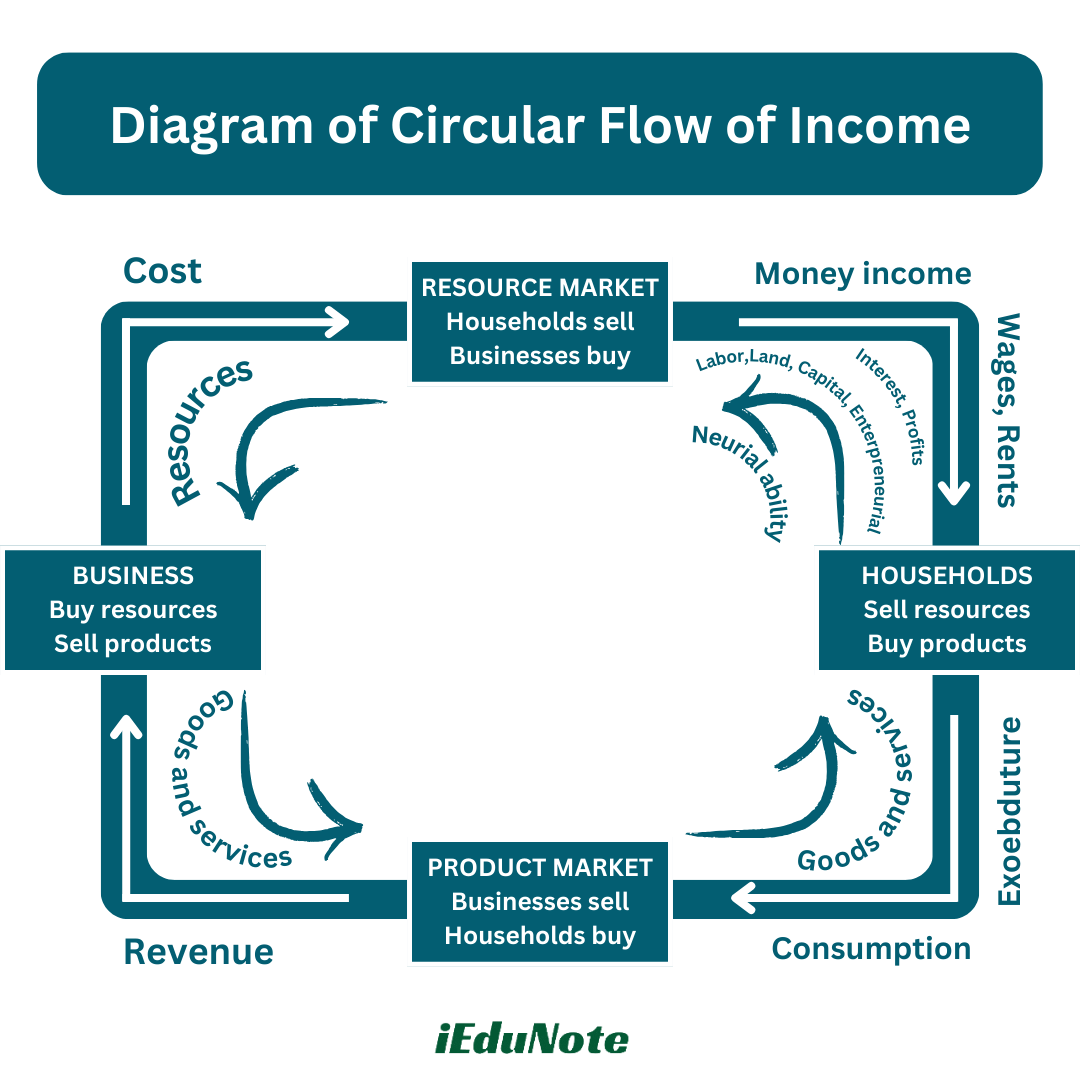A simple circular flow model of macroeconomics containing two sectors (business and household) and two markets (product and factor) that illustrates the continuous movement of the payments for goods and services between producers and consumers.
The payment flow between the two sectors and two markets is conveniently divided into four segments representing consumption expenditures, gross domestic product, factor payments, and national income.
The modern economy is monetary. In the modern economy, money is used as a medium of exchange. While analyzing the circular flow of income in a two-sector model of the economy, we assume:
Assumptions of the Circular Flow Model
- There are only two sectors in the economy, the household sector and the business sector.
- The business sector (or the firms) hires factors of production owned by the household sector and it is the sole producer of goods and services in the economy.
- The household sector (or the households) is the sole buyer of goods and services. It spends its entire income on the goods and Services produced by the business sector. They are also suppliers of labor and several other factors of production.
- The business sector sells the entire output to households. It does not store. So there are no inventories.
- There are no savings and investments in the economy.
- The household sector receives income by selling or renting the factors of production owned by it.
- Government does not exist for all such practical purposes (No public expenditures, no taxes, no subsidies, no social insurance contribution, etc.).
- The economy is closed by having no international trade relations.
In this hypothetical economy stated above, we shall explain the circular flow of economic life.
Principles of Circular Flow of National Income
In the simple circular flow of income and product, there are two principles that are involved.
First
In business transactions, the sellers of goods receive the same amount that the buyers spend on them.
Second
the goods and services flow in one direction, and the money payment flows in the other direction.
Explanation of Circular Flow of National Income
In a two-sector economy, there are business firms that produce goods and services. The other sector is households which supply their factors services to the firms and also buy goods and services produced by them.
The households supply the economic resources to the firms and receive payments in terms of money. There is a flow of money corresponding to the flow of economic resources.
These money incomes are spent by households on goods and services produced by the firms. With this, the money comes back to the firms.
This circular flow of income is the mutual dependence of the two sectors of the modern economy.
Diagram of Circular Flow of Income
The circular flow of income in a two-sector economy is explained below with the help of a figure.

In this figure, it is shown that the economy consists of two sectors such as households and business sectors.
In the upper top of this figure, the resources such as land, capital, labor, and entrepreneurial ability flow from households to business firms as indicated by the arrow mark.
In the opposite direction to this, money flows from business firms to households as factors payments such as rent, wages, interest, and profit.
In the lower pipeline, money flows from households to firms as consumption expenditure made by the households on the goods and services produced by the firms.
The flow of goods and services is in the opposite direction from business firms to households.
Thus we find that money flows from business firms to households as factor payments and then it flows back from households to firms.
Thus there is a circular flow of income. This circular flow of money or income continues year after year. This is how the economy is operated.